Harbor Freight Trailer Mods
by Chuck
Leinweber
Last time we talked, I
had just bought a Harbor Freight trailer for my then almost
completed Ladybug.
I wrote a review
of the trailer in these pages. Since
that time, I've finished the boat and modified the trailer to
fit.
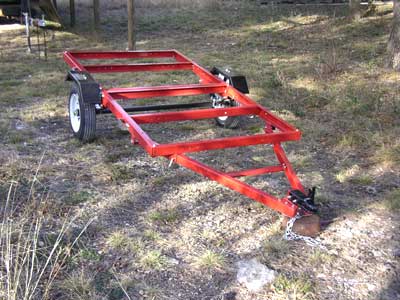
The first thing I had to do was
to extend the tongue. As it comes this trailer is 8 feet on
the deck with a short yoke on the front ending with a hitch.
The boat itself is 14 feet, so more would have to be added on.
Another problem was the hitch itself. It was for a 1-7/8"
ball and mine are all 2", so I had to buy a new hitch.
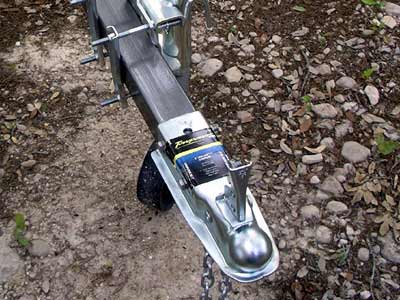
I got a cheap one from Wal-Mart.
They had two to choose from: heavy and light. I went with the
light one. They were both stamped from sheet steel and zinc
plated. It should last as long as the trailer.
I took the trailer to a buddy
of mine who is a very good welder and has the right equipment.
He wanted to just weld my new piece of 2-1/2" square tubing
to the yoke on the trailer and cut it to length. I did not want
to do that, though, as I didn't want to weld over the nice paint
job that came on the trailer. Finally we hit on the idea of
making a new plate that would bolt where the old hitch went,
and weld that to the new tongue.
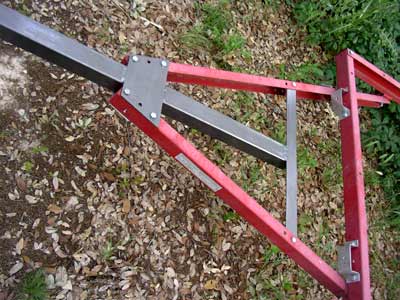
We found a piece of 2" angle
iron to bolt in where a brace was before and took the square
tubing back to that before going forward to the new plate. In
the picture above, you can see how it all went together. I painted
it with some left over silver paint (I didn't have any red)
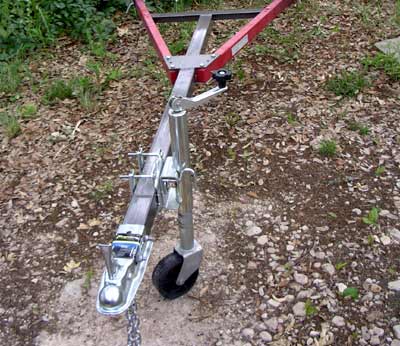
With the jack I mentioned in
the review, it looks like this.
To carry the boat on the trailer, I now needed
to build some bunks or bolsters. Not being a welder, nor wanting
to bother my friend with this, I elected to build in wood.
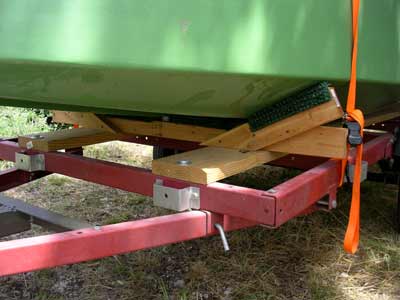
First I found the center of gravity of the boat,
then measured the distance in each direction to the bulkheads.
(On a boat like this, the bolsters need to bear right under
the bulkheads rather than in the middle of an unsupported area
of plywood.) Now I plotted to locations of the bunks by figuring
that the center of gravity of the boat should end up about a
foot ahead of the trailer axle to keep some weight on the tongue.
After measuring the shape of the boat's bottom at the bulkheads,
I built bolsters out of 2x4's and covered them with some Astroturf
I got from cutting up a welcome mat.
(A word about Astroturf. This is stuff vastly
superior to indoor/outdoor carpet for this purpose. It is not
spongy so it does not hold water against your boat, and it is
slippery, allowing much easier launching and retrieval.)
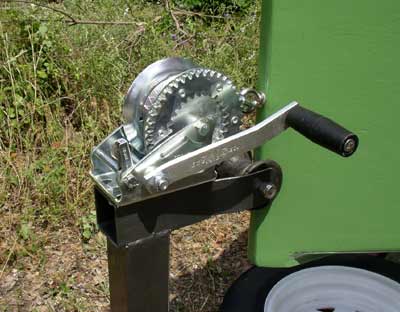
The big remaining job was to mount the winch.
Back to my friend with the welder, and this time he was happy
to simply weld a bit of the left over square tubing to the new
tongue. Then we took another little piece of the stuff and made
a holder for the little rubber bow roller and mount for the
winch itself (both of which came from, you guessed it: Wal-Mart).
The whole thing was done in an hour and made a neat job.
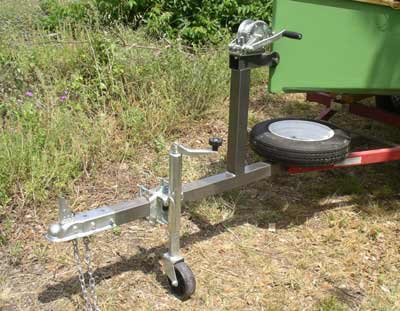
A spare tire bolted to the trailer finished the
whole thing off for $25 (from my favorite store).


